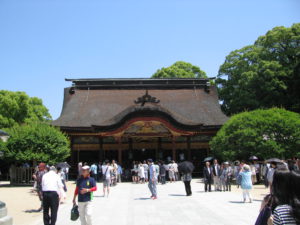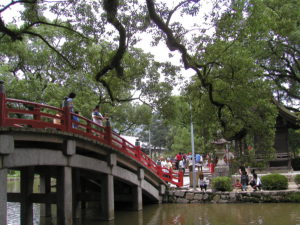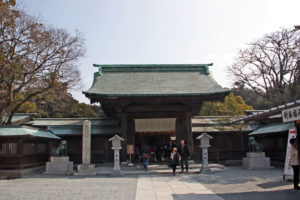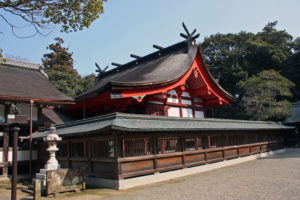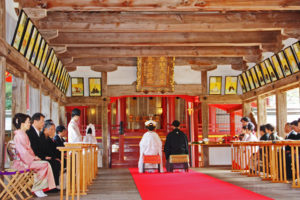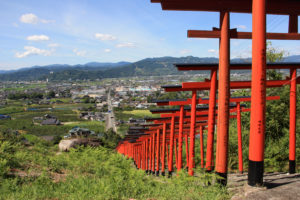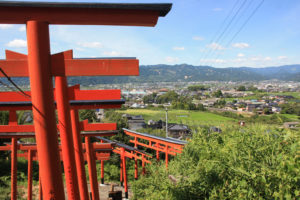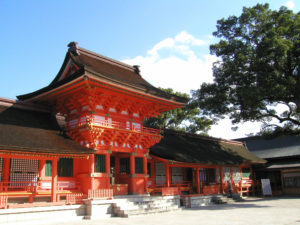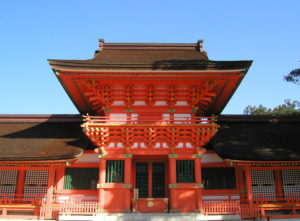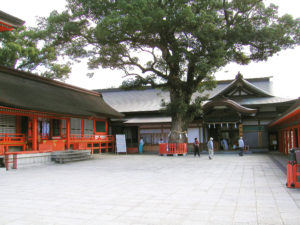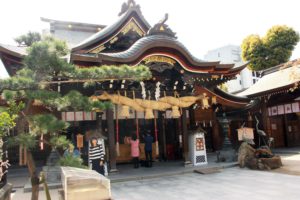Miyazaki Shrine, in Miyazaki
Miyazaki Shrine is the oldest and most important shrine in the city. Dedicated to Emperor
Jimmu, the mythical first emperor of Japan, it is said to have been established over 2600
years ago.
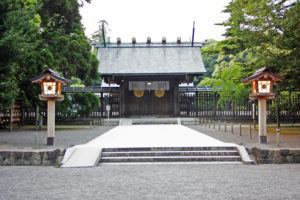 |
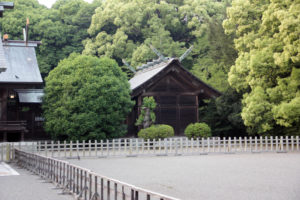 |
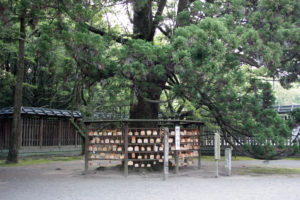 |
The shrine’s buildings, constructed of simple, unpainted cedar, sit in the center of a
large, quiet forest. Festivals and other events such as horseback archery competitions
(yabusame) are held during the year on the wide path under the trees.
Dazaifu Tenmangu Shrine, in Dazaifu
Dazaifu Tenmangu Shrine is located in Dazaifu, Fukuoka-prefecture.
The Shrine dedicated to the deity of learning, many Japanese visit the Shrine to pass the
examination successfully. Built on the site of grave of Sugawara Michizane, who is deified
as the Deity of scholarship. The shrine is the headquarter shrine of 12,000 Tenmangu
shrines in Japan.The prescient contain two ponds, an arched bridge, treasure house, and
the cypress-bark-roof main hall which was constructed in 1591 and registered as important
Cultural Property.
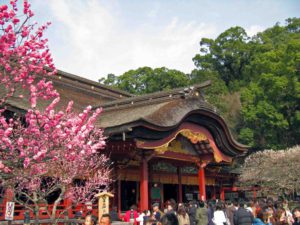 |
|
|
Standing to the right side of main hall in a sacred plum tree known as the “flying plum” , which
has been worshipped as the symbol of the shrine. Within the Shrine nature precinct are many
plum trees, camphor tree, and irises, which provide nature beauty in every season of year.
Munakata Shrine Hetsu-gu, in Munakata
Munakata Shrine Hetsu-gu is located in Munakata, Fukuoka-prefecture.
The Shrine has been registered on the World Heritage in 2016.
The Sacred Island Okinoshiam and Associated site in the Munakata region.
|
|
|
|
Hetsu-gu is one of the three shrines that comprise Munakata Shrine and enshrines
Ichikishimahime-no-Kami, one of the three female deities of Munakata. Visitors passing
through the torii gate and proceeding along the path will find the Main Hall, dedicated to
Ichikishimahime-no-Kami, beyond the Shinmon gate.
Miyajidake Shrine, in Fukutsu
Miyajidake Shrine is located in Fukutsu, Fukuoka-prefecture.
The Shimenawa is the biggest in Japan. Surprisingly, weight is 3ton, with 2.6m diameter
and 11m length. Shimenawa is the thick, twisted straw rope. It was believed in ancient days
that a Shimenawa had the power to keep off evil sprits, so many objects connected with
Shinto Shrines decorated with Shimenawa.
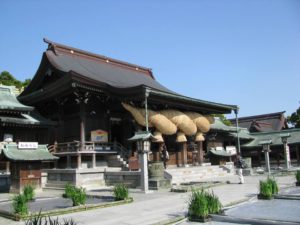 |
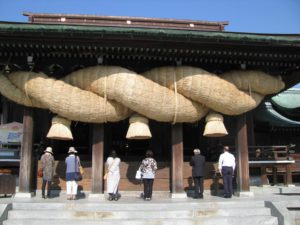 |
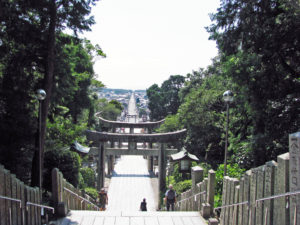 |
Miyajidake Shrine is primarily dedicated to Empress Jingu and attracts over 2 million
worshippers a year who pray for commercial success, good luck, and to ward off adversity.
Ukiha Inari Shrine, in Ukiha
Ukiha Inari Shrine is located in Ukiha, Fukuoka^prefecture, at foot of Mino mountain range,
130 m height from sea level. Breath taking scenery in harmony with the Shrine.
The 90 vermilion coloured Torii Gates stand on the 300 steps stairs is introduced you from
bottom area to the Shrine main building.
|
|
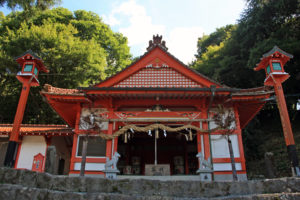 |
|
From the Shrine compound, a breath taking panoramic view of Chikugo plain in harmony with
Torii Gate can be enjoyed.
Kora Taisha Shrine, in Kurume
Kora Taisha Shrine is located in Kurume, Fukuoka-prefecture and stand at the middle of
Kora Mountain.
The largest Shrine in Kyushu. The shrine is specified as Ichino-miya or the
representative Shrine in Chikugo region. The Shrine was built in 1661 and has been
designated as important Cultural Property in Japan.
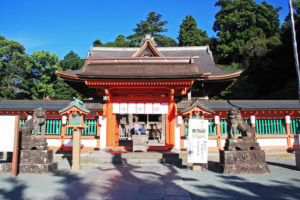 |
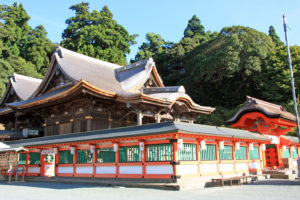 |
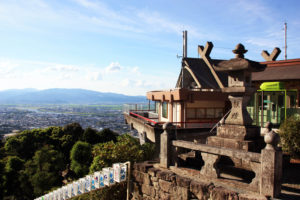 |
From the Shrine compound, breath taking magnificent view of Chikugo plain can be seen.
Yutoku Inari Shrine, in Kashima
Yutoku Inari Shrine is located in Kashima, Saga-prefecture.
One of the most famous Inari shrines in Japan. Dedicated to Inari, the deity whose messengers
are foxes, it is the third largest of its kind in Japan.
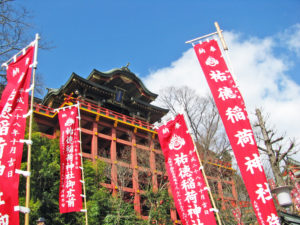 |
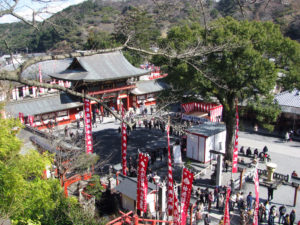 |
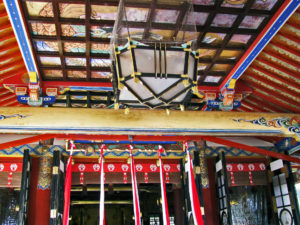 |
It was constructed in 1688 as the family shrine of the Nabeshima clan who ruled what would
become the Saga area during the Edo period.
Usa Shrine, in Usa
Usa Shrine is located in Usa, Oita-prefecture.
One of the most beautiful Shrine in Japan, the head shrine of Hachiman Shrine that is
composed 44,000 shrines that dedicated to the Hachiman Deity.
|
|
|
|
Kushida Shrine, in Fukuoka-cty
Kushida Shrine is located in Fukuoka-city, Fukuoka-prefecture.
The Shrine of Hakata Gion Yamagasa Festival. Located in Hakata nearby Canal City Hakata
and was built in 757 as a guardian deity of Hakata. The most exciting summer festival in Kyushu,
Hakata Gion Yamakasa is held in the shrine in July. The tall Kazari Yamakasa, a luxuriously
decorated float, is always displayed. The float was constructed without using even a single nail.
The Oi Yamakasa, in which floats weighing over a ton race through the streets of Hakata carried
on the shoulders of 26 people, presents a dynamic spectacle of bravery and strength that attracts
many spectators.
|
|
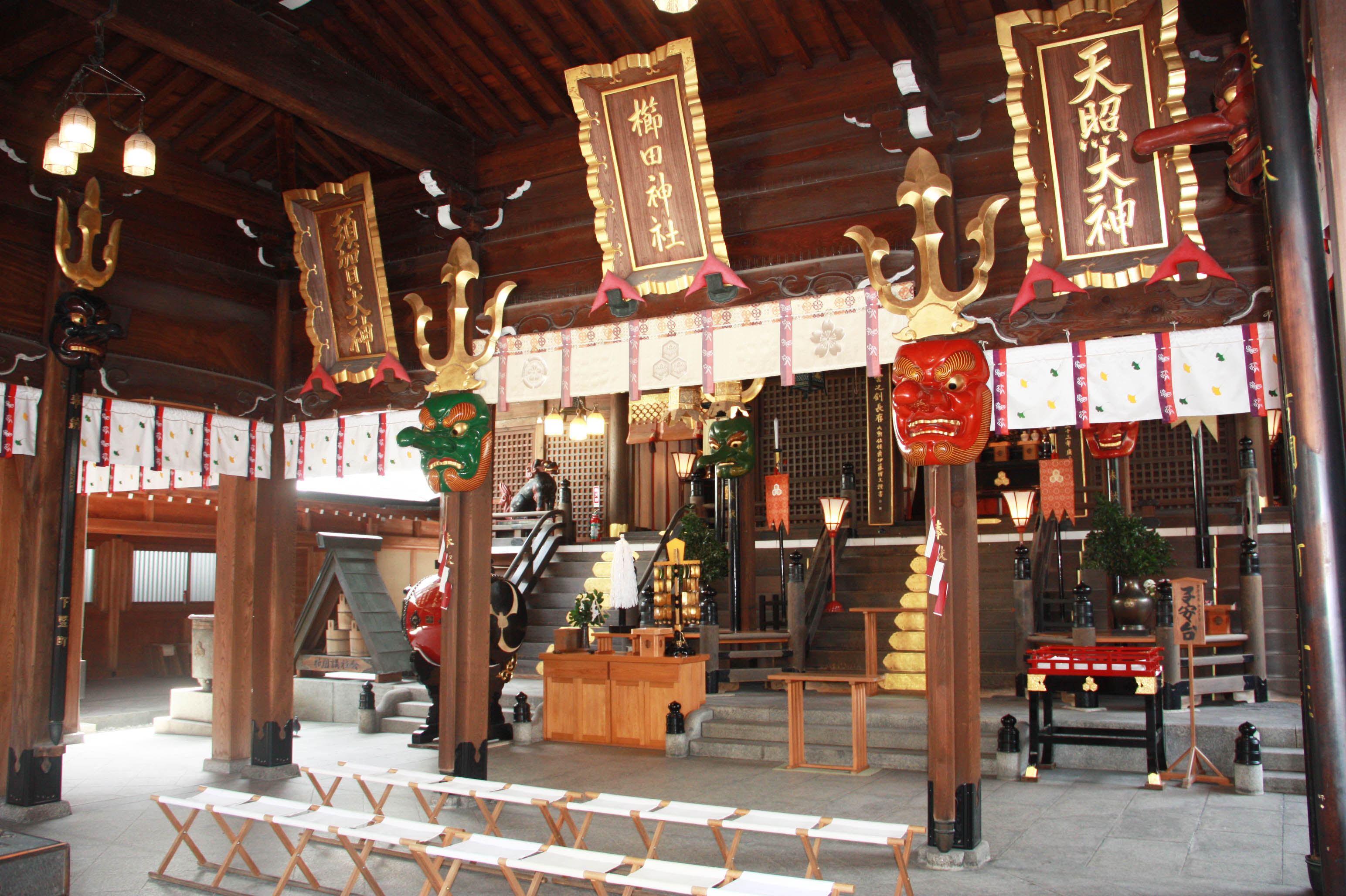 |
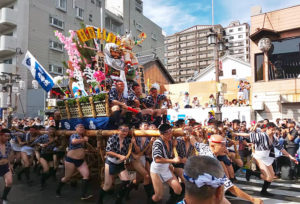 |
The shrine is also famous as place of Setsubun ceremony ( Bean throwing
ceremony) which is held on February 3rd every year.
Aso Shrine, in Aso
Aso Shrine is located in Aso, Kumamoto-prefecture.
It is popular as a god protecting worshipers from traffic accidents, and exorcism,
marriage, and learning. Aso shrine one of the oldest and most prominent shrines in Japan,
and was built in 281 before accession of the 1st Emperor Jinmu.
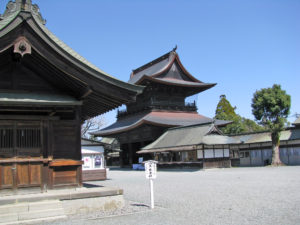 |
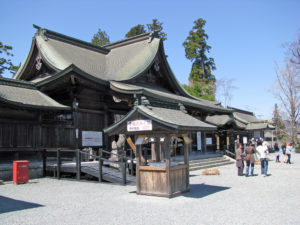 |
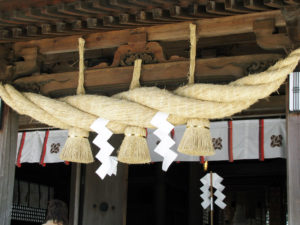 |
The shrine is located in the center of the caldera of Mt. Aso and the caldera is known as

